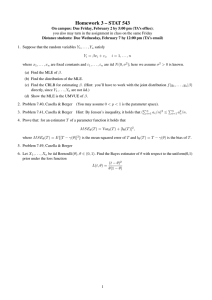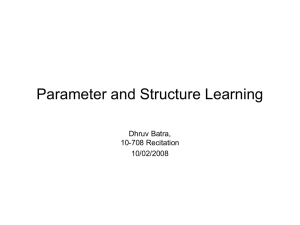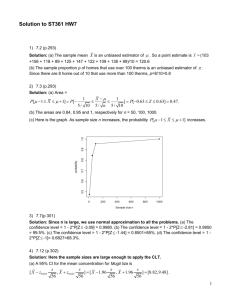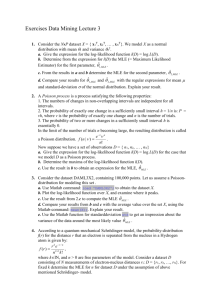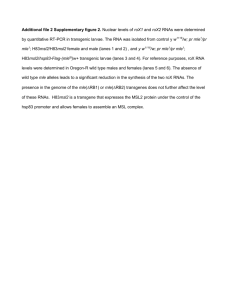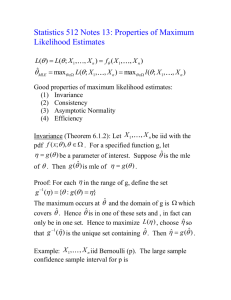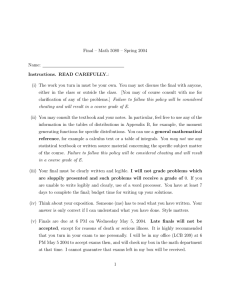Lecture Notes March 8, 2007. (Word doc, 54 KB.)
advertisement
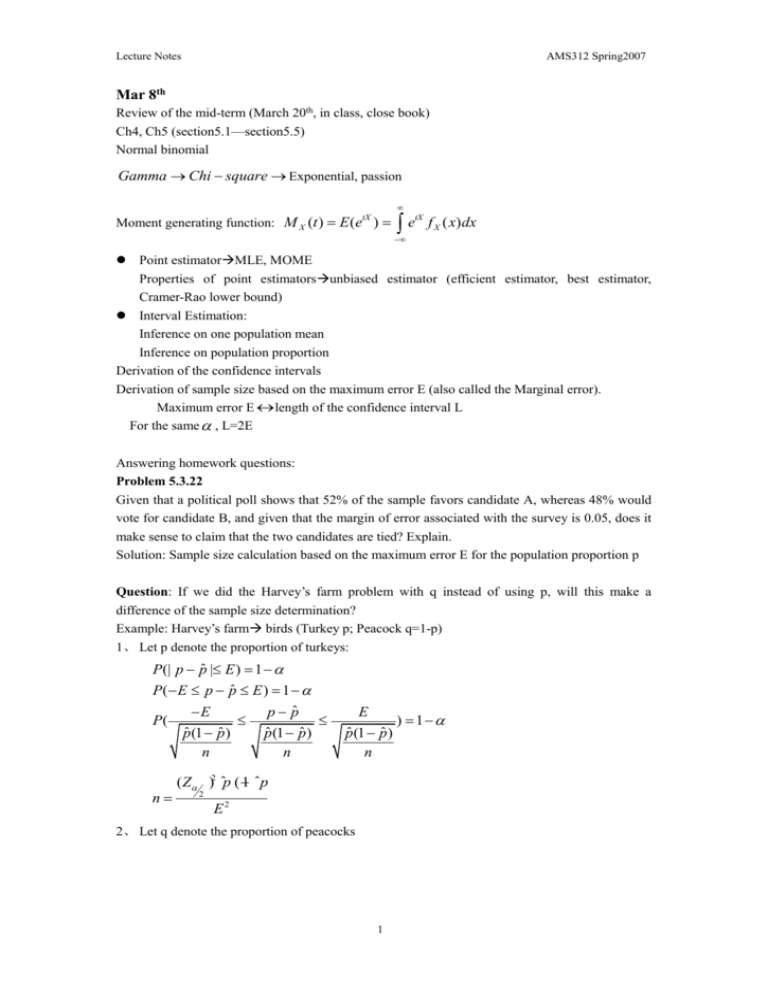
Lecture Notes AMS312 Spring2007 Mar 8th Review of the mid-term (March 20th, in class, close book) Ch4, Ch5 (section5.1—section5.5) Normal binomial Gamma Chi square Exponential, passion Moment generating function: M X (t ) E (e ) tX e tX f X ( x) dx Point estimatorMLE, MOME Properties of point estimatorsunbiased estimator (efficient estimator, best estimator, Cramer-Rao lower bound) Interval Estimation: Inference on one population mean Inference on population proportion Derivation of the confidence intervals Derivation of sample size based on the maximum error E (also called the Marginal error). Maximum error E length of the confidence interval L For the same , L=2E Answering homework questions: Problem 5.3.22 Given that a political poll shows that 52% of the sample favors candidate A, whereas 48% would vote for candidate B, and given that the margin of error associated with the survey is 0.05, does it make sense to claim that the two candidates are tied? Explain. Solution: Sample size calculation based on the maximum error E for the population proportion p Question: If we did the Harvey’s farm problem with q instead of using p, will this make a difference of the sample size determination? Example: Harvey’s farm birds (Turkey p; Peacock q=1-p) 1、 Let p denote the proportion of turkeys: P(| p pˆ | E ) 1 P( E p pˆ E ) 1 P( n E pˆ (1 pˆ ) n p pˆ pˆ (1 pˆ ) n E ) 1 pˆ (1 pˆ ) n ( Z )2 ˆp ( 1 ˆp ) 2 E2 2、 Let q denote the proportion of peacocks 1 Lecture Notes AMS312 Spring2007 P(| q qˆ | E ) 1 P( E q qˆ E ) 1 E q qˆ E P( ) 1 qˆ (1 qˆ ) qˆ (1 qˆ ) qˆ (1 qˆ ) n n n 2 2 ( Z ) qˆ (1 qˆ ) ( Z ) pˆ (1 pˆ ) 2 2 n E2 E2 Hence we can see that the sample sizes we calculated are the same. Problem 5.2.8 Solution: 1) MLE for p: pˆ n 1011 (we put X=6 to the group of 6+) X i 1536 Expected number of cars with 1 occupant=1011*P(X=1) = 1011* 2) MOME for p is the same with MLE in this problem. Problem 5.2.14: Solution: MLE of when is unknown: 2 MLE of when is known: 2 (X i X )2 n (X i n 2 )2 1011 1011 11 (1 ) 1536 1536

